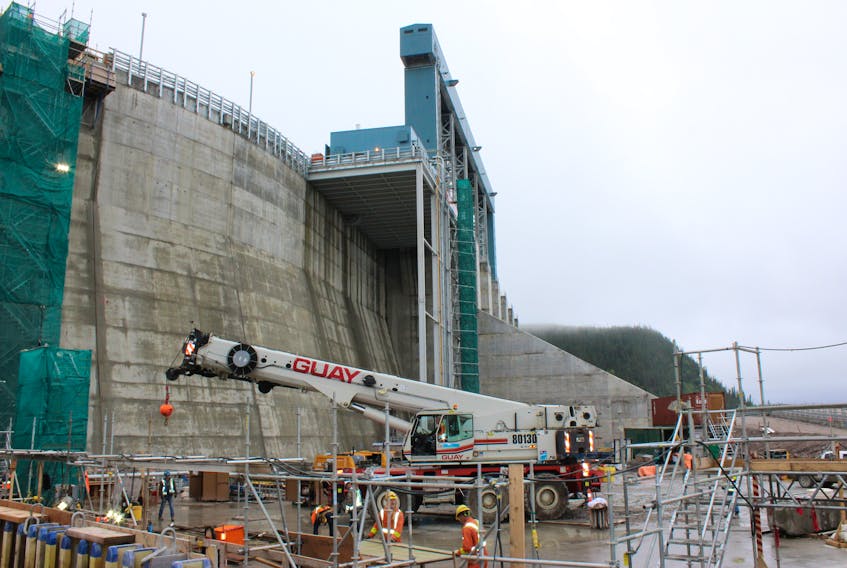I’m extremely worried about shortsightedness.
I’m twice as worried because it’s an election year.

When you borrow money, you pay interest on it.
When you delay paying the money back, you pay even more interest on it.
Tuesday, the government released an interim report by the province’s Public Utilities Board on ways to address the ruinous electric bills caused by Muskrat Falls.
If nothing’s done, the price of electricity will double.
The board’s suggestions are at an extremely early stage, but some make sense: wring every penny possible out of Nalcor and Newfoundland and Labrador Hydro’s income, whether it’s profits from oil, from power sold outside the province, and from any profits the two companies might get from their businesses.
Those, I can buy into.
But then things get a little scary.
I mean, Natural Resources Minister Siobhan Coady seems to be taking seriously the idea of keeping power rates where they are right now, something that would cost the treasury (and therefore us) $744 million a year. Even if Muskrat Falls had come in on time and on budget, we would have been looking at higher rates than that.
Or the minister might be looking at $342 million a year, to keep rates at the average of the Atlantic Canadian provinces.
To do that, some of the suggestions being kicked around are like the kinds of things you resort to when you can’t buy food: remortgage. Make the kids get jobs. Sell off the furniture.
Let’s go back a bit to the beginning, when we started borrowing for Muskrat.
First it was $5 billion for 40 years at an interest rate of 3.8 per cent. (Or, I don’t know, a ballpark $7.6 billion in interest payments over the whole 40 years.) One of the great wins, trumpeted by both the provincial government and Nalcor, was what they happily called “historically low interest rates.”
A federal loan guarantee meant we could use their interest rate, meaning a $1-billion saving in interest.
Then, in November 2016, there was a second loan guarantee for $2.9 billion — at the time, Premier Dwight Ball said it could be borrowed at 2.4 per cent — or, something like another $2.8 billion in interest payments over the full term.
So, over $10 billion in interest going somewhere other than here.
But that’s just if we stick with the program and don’t push things into the future, adding more interest.
Among the suggestions? Borrowing money to reduce the payments on money we already owe, with the debts of the new borrowed money pushed off into the future. Yikes.
Or, my personal least-favourite: getting a new massive loan with a third federal loan guarantee and using that money to pay sinking fund commitments — in other words, paying off a chunk of the principal with new interest-bearing debt that we then pay back, with interest, way down the road.
There’s even a suggestion that we might just not pay down the principal the way we were planning to, using sinking funds: “A sinking fund arises from a term of a bond indenture that requires the issuer to regularly set money aside in a separate account for the exclusive purpose of redeeming the bonds. … The reduction or deferral of sinking fund payments could lower Hydro’s revenue requirement significantly in the early years. … However, if the sinking fund payments are reduced, a plan to fund the retirement of the debt at maturity would need to be considered.”
We made this. Facts were kept from us, faulty assumptions were made, but we’re going to have to fix it.
Yeah, just imagine the circumstance otherwise — after paying off billions over decades, we might end up owing the same $7.9 billion we borrowed, and have to refinance it all over again.
All of these delaying tactics just increase what we’ll have to pay in the end and pass it on to future generations.
It just makes me think of the “historic” occasion when we borrowed all this cash in the first place.
“This is one of those occasions we should tell our children about and help them understand how important this moment is for them and their future,” then-premier Kathy Dunderdale’s speaking notes read.
Too true — though not in the way she meant it.
We made this. Facts were kept from us, faulty assumptions were made, but we’re going to have to fix it.
The best way to do that? By figuring out the maximum we can pay without going broke and paying the debts off as fast as we can.
Every penny we delay paying will be repaid with interest later on.
Recent columns by this author
RUSSELL WANGERSKY: no runaround, just dam statistics
RUSSELL WANGERSKY: Russia planning solo mission in cyberspace
Russell Wangersky’s column appears in 36 SaltWire newspapers and websites in Atlantic Canada. He can be reached at [email protected] — Twitter: @wangersky.









